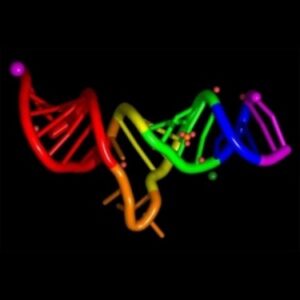THE SCIENCE OF RNAI

Source – Phys.org
The RNAi pathway may have originally been an early virus-identification system in the cell, identifying and destroying any double-stranded RNA as an effort to prevent viral replication. An alternate hypothesis is that the RNAi pathway affects transcription in some way, as small RNAs may determine which genes are transcribed and which remain wrapped inside the chromatin.
The RNAi mechanism of action is triggered when short double-stranded RNA (dsRNA) is formed. Double stranded RNA can occur several ways:
- Through the action of viruses, which may introduce dsRNA into the cell.
- By the introduction of small interfering RNA (siRNA), a double-stranded typically 20-24 base pair segment of RNA, ending with two overhanging nucleotides, and phosphorylated 5′ ends and hydroxylated 3′ ends. SiRNA occurs naturally in the cell, and also may be administered artificially. The effects of siRNA last 3-7 days when transfected into an organism.
- By the introduction of a plasmid that produces short hairpin RNA(shRNA), a small piece of RNA (typically 19 to 29 base pairs, joined by a 4 nucleotide loop) that is self-complementary and doubles over to appear double-stranded. The Dicer enzyme recognizes shRNA and cleaves it to convert it into siRNA. With the introduction of a shRNA producing gene, shRNA effects can last up to 3 years.
- Through the action of microRNA (miRNA), 22-nucleotide strands of RNA which regulate gene expression by binding to complementary mRNA, making the mRNA double-stranded and inhibiting its transcription and translation. Like siRNA, these may be inherent to the cell or introduced by artificial means, and are similarly short-lived.
This double-stranded RNA forms, with several proteins, the RNA-induced silencing complex (RISC), which utilizes the dsRNA as a template to destroy any RNA that shares the sequence of the dsRNA. The RISC is extremely effective at silencing specific genes without affecting other genes.
The RNAi response has been demonstrated effectively in mammalian cells and tissues for both exogenous and endogenous genes. The knockdown effect can be partial, diminishing but not completely silencing the expression of a gene, or complete, turning off the function of a gene entirely. Long dsRNA (>30 base pairs) can trigger the interferon response, leading to general mRNA cleavage and apoptosis, making length one of the crucial parameters to control in the manufacture of RNAi products.
Discovery and explanation of the RNAi effect won Andrew Fire and Craig Mello the Nobel Prize in Medicine in 2006. They initially injected nematodes (the first multicellular organism to have a fully-sequenced genome) with a single strand of RNA that bound a target mRNA, later discovering that injecting a double-stranded version of the same sequence amplified the observed gene-silencing effect.
Request formal project quotation from Altogen Labs CRO.
RNAi Laboratory Services │ The Science Of RNAi │ Applications Of RNAi │ Quality Controls │ Comprehensive Gene Silencing Laboratory Services